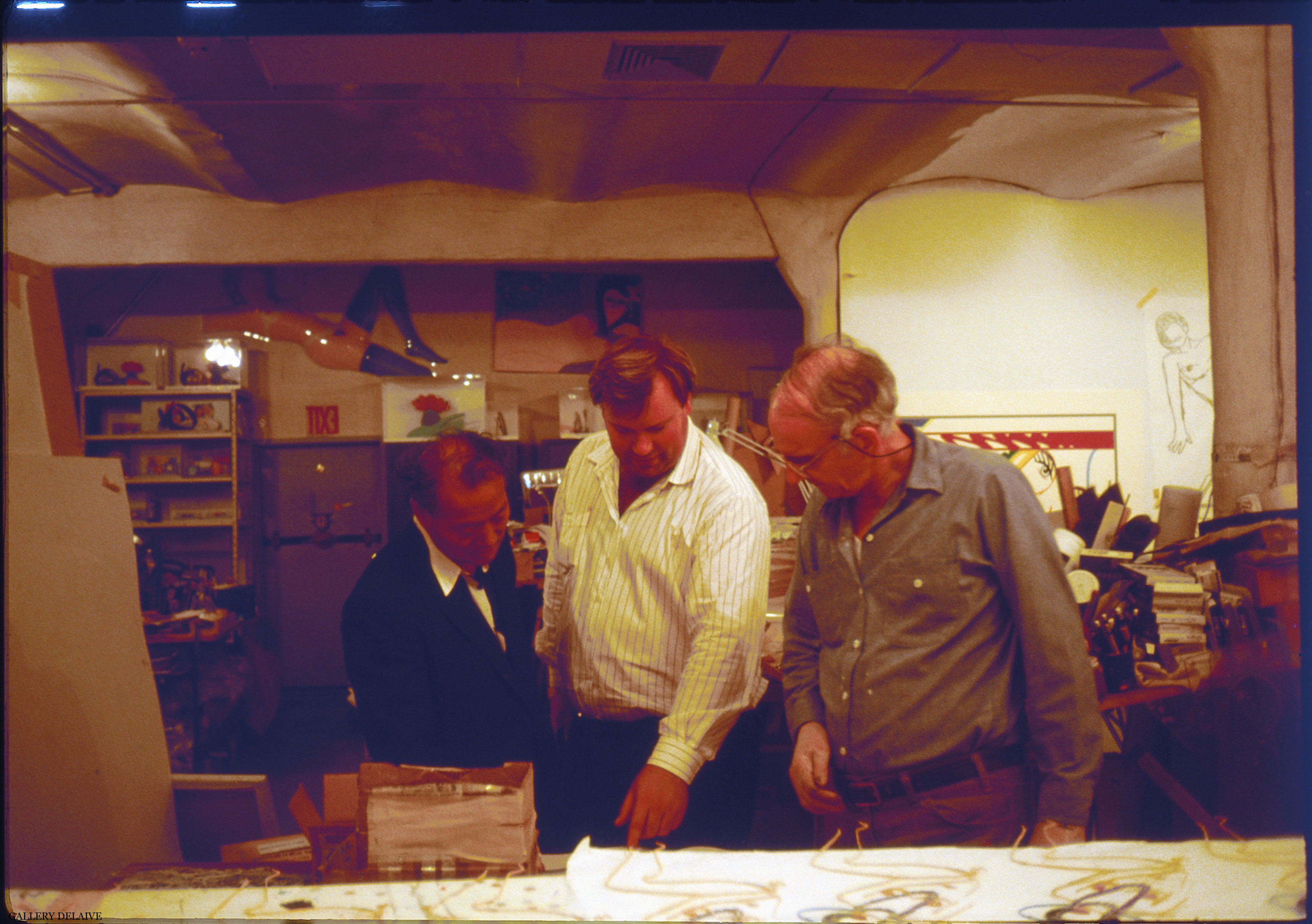About
Information about the artist
Tom Wesselmann, a prominent American Pop artist during the 1960s, expressed a primary goal: to infuse figurative art with the same captivating essence found in abstract art. Departing from the prevalent Abstract Expressionism movement, Wesselmann delved into classical representations of nudes, still life, and landscapes, merging them with everyday items and advertising material.
In 1952, during the Korean War, Wesselmann was conscripted into the US Army. During his service, he learned aerial photography interpretation and began drawing cartoons about his experiences, later teaching this skill. Returning to Cincinnati, his hometown, he pursued a BA in psychology at the University of Cincinnati while also attending classes at the Art Academy of Cincinnati. Subsequently, in 1956, he relocated to New York City to study art at the Cooper Union, where Nicholas Marsicano mentored him. It was at Cooper Union where he met Claire Selley, his future wife and eternal muse. Wesselmann’s early drawings of Selley took the form of hybrid collages, incorporating sketches, wallpaper scraps, and advertisements. His early assemblage paintings, integrating functional objects and gadgets, offered dynamic images that shifted depending on the viewer’s perspective.
Living in Brooklyn, Wesselmann sustained himself by selling cartoons to publications like the Saturday Evening Post, “gag” magazines, and advertising agencies. In the late 1950s, he co-founded the Judson Gallery in the West Village alongside Marc Ratliff and Jim Dine. After completing his studies, he spent three years teaching high school art and math while dedicating his evenings to expanding his artistic practice, crafting small portrait collages such as the influential Portrait Collage #1 (1959). Wesselmann expressed his desire for his paintings to possess the spatial and visual assertiveness akin to de Kooning, but also emphasized the necessity to forge his unique style by moving beyond de Kooning’s influence, just as de Kooning did with Picasso.
Wesselmann is acclaimed for his Great American Nude series (1961–73), which merges sensual female figures with allusions to art history and popular culture. These reclining female subjects were often depicted in patriotic red, white, and blue, integrating elements of American advertising within the Western figurative tradition. In the late 1960s, he created close-up views of the nude in the Bedroom Paintings (1968–83), juxtaposing a single body part with typical bedroom objects like a light switch, flowers, pillow edges, and curtains.
Between 1967 and 1981, Wesselmann worked on his Standing Still Life paintings, massive works composed of multiple canvases shaped to outline common objects. In 2018, the complete series of nine works was exhibited for the first time at Gagosian on West 24th Street in New York. Following the Standing Still Lifes, he ventured into three-dimensional sculptural works. He innovatively “drew” with sculptural materials, cutting steel and aluminum into the shapes of his drawn forms. His abstract works from the mid-1990s to the early 2000s expanded on this mode, pushing the boundaries between painting and sculpture on a larger scale.
Nico Delaive with Walasse Ting in Wesselman’s studio, 1980s